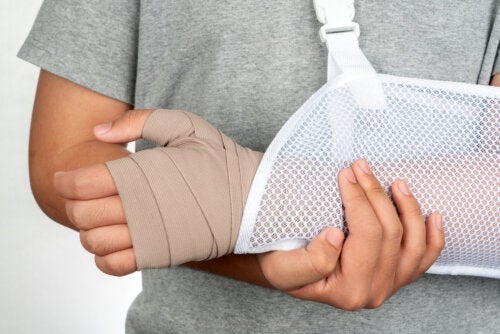10 Factors that Affect Bone Health in Children


Written and verified by the dermatologist Maria del Carmen Hernandez
Exploring the key factors that influence bone health in children
Bones play a crucial role in body structure, providing support, protection, and mobility. However, several factors can affect children’s bone health, and it’s important to be aware of them in order to take preventive measures and promote strong, healthy bones from an early age.
1. Exercise
Regular and adequate exercise is essential for bone development in children. The journal Pediatric Exercise Science explains that physical activity promotes new bone formation and strengthens bone density. Children should participate in activities such as running, jumping, sports, and outdoor play to promote a healthy skeletal system.
2. Genetic predisposition
3. Chronic diseases
Some chronic diseases, such as celiac disease, inflammatory bowel disease, and juvenile arthritis, can affect children and their bones. These conditions interfere with the absorption of nutrients needed for skeletal health or trigger an inflammatory process that could affect bone formation.
4. Hormonal deficiencies

5. Diet
A balanced and nutritious diet plays a crucial role in children’s bone health. Adequate intake of calcium, vitamin D, protein, and other essential nutrients is critical for bone development and maintenance.
Calcium-rich foods include dairy, fish, leafy green vegetables, and fortified products. Vitamin D is found in sun exposure and in foods such as fatty fish and egg yolk. It’s important to note that according to an article published in the journal Pediatrics, routine calcium supplementation isn’t recommended for children
6. Medications
7. Tobacco and alcohol exposure
Smoking and drinking alcohol at an early age compromises bone development and health. A study by The Journal of Clinical Endocrinology and Metabolism suggests that children of smoking parents have impaired bone health in adulthood.
8. Sedentary activities
9. Trauma and injury
Injuries and bone fractures during childhood can have a lasting impact on bone health. It’s essential to prevent injuries and provide a safe environment for children, especially during sports or physical activities.
10. Environmental factors
Some environmental factors, such as exposure to high levels of pollution or lack of access to green space, can influence children’s bone health. These factors affect air quality and the availability of opportunities for outdoor physical activity.
Common bone disorders in children
In children, there are several bone disorders that can affect their health and development. Each of them requires proper medical attention for diagnosis and treatment. Some of the most common are the following.

Bone fractures
These are common due to the level of physical activity and increased risk of falls and traumatic injuries. The most affected bones are usually the arms and legs.
Rickets
Rickets is a metabolic disease characterized by a deficiency of vitamin D, calcium, or phosphorus. This deficiency adversely affects bone mineralization, resulting in weakened bones and skeletal deformities. It can also occur due to poor diet, lack of sun exposure, or absorption problems.
Osteogenesis imperfecta
Also known as “brittle bone disease,” this is a genetic disorder characterized by fragile bones and a predisposition to fracture, even under mild pressure or trauma.
Blount’s disease
Blount’s disease is a growth disturbance of the tibia (lower leg bone) that causes a leg deformity known as tibia vara. This condition is characterized by an abnormal curvature of the tibia, which can affect walking and cause leg alignment problems.
Developmental dysplasia of the hip
This is a malformation of the hip joint in which the head of the femur doesn’t fit into the acetabulum (hip socket). If left untreated, it can lead to disruption in the normal development of the joint and cause long-term problems.
If a bone disorder is suspected, it’s important to seek evaluation by a healthcare professional for an accurate diagnosis and appropriate treatment plan.
The importance of bone health in children
Exploring the key factors that influence bone health in children
Bones play a crucial role in body structure, providing support, protection, and mobility. However, several factors can affect children’s bone health, and it’s important to be aware of them in order to take preventive measures and promote strong, healthy bones from an early age.
1. Exercise
Regular and adequate exercise is essential for bone development in children. The journal Pediatric Exercise Science explains that physical activity promotes new bone formation and strengthens bone density. Children should participate in activities such as running, jumping, sports, and outdoor play to promote a healthy skeletal system.
2. Genetic predisposition
3. Chronic diseases
Some chronic diseases, such as celiac disease, inflammatory bowel disease, and juvenile arthritis, can affect children and their bones. These conditions interfere with the absorption of nutrients needed for skeletal health or trigger an inflammatory process that could affect bone formation.
4. Hormonal deficiencies

5. Diet
A balanced and nutritious diet plays a crucial role in children’s bone health. Adequate intake of calcium, vitamin D, protein, and other essential nutrients is critical for bone development and maintenance.
Calcium-rich foods include dairy, fish, leafy green vegetables, and fortified products. Vitamin D is found in sun exposure and in foods such as fatty fish and egg yolk. It’s important to note that according to an article published in the journal Pediatrics, routine calcium supplementation isn’t recommended for children
6. Medications
7. Tobacco and alcohol exposure
Smoking and drinking alcohol at an early age compromises bone development and health. A study by The Journal of Clinical Endocrinology and Metabolism suggests that children of smoking parents have impaired bone health in adulthood.
8. Sedentary activities
9. Trauma and injury
Injuries and bone fractures during childhood can have a lasting impact on bone health. It’s essential to prevent injuries and provide a safe environment for children, especially during sports or physical activities.
10. Environmental factors
Some environmental factors, such as exposure to high levels of pollution or lack of access to green space, can influence children’s bone health. These factors affect air quality and the availability of opportunities for outdoor physical activity.
Common bone disorders in children
In children, there are several bone disorders that can affect their health and development. Each of them requires proper medical attention for diagnosis and treatment. Some of the most common are the following.

Bone fractures
These are common due to the level of physical activity and increased risk of falls and traumatic injuries. The most affected bones are usually the arms and legs.
Rickets
Rickets is a metabolic disease characterized by a deficiency of vitamin D, calcium, or phosphorus. This deficiency adversely affects bone mineralization, resulting in weakened bones and skeletal deformities. It can also occur due to poor diet, lack of sun exposure, or absorption problems.
Osteogenesis imperfecta
Also known as “brittle bone disease,” this is a genetic disorder characterized by fragile bones and a predisposition to fracture, even under mild pressure or trauma.
Blount’s disease
Blount’s disease is a growth disturbance of the tibia (lower leg bone) that causes a leg deformity known as tibia vara. This condition is characterized by an abnormal curvature of the tibia, which can affect walking and cause leg alignment problems.
Developmental dysplasia of the hip
This is a malformation of the hip joint in which the head of the femur doesn’t fit into the acetabulum (hip socket). If left untreated, it can lead to disruption in the normal development of the joint and cause long-term problems.
If a bone disorder is suspected, it’s important to seek evaluation by a healthcare professional for an accurate diagnosis and appropriate treatment plan.
The importance of bone health in children
All cited sources were thoroughly reviewed by our team to ensure their quality, reliability, currency, and validity. The bibliography of this article was considered reliable and of academic or scientific accuracy.
- Beck, B. R. (2017). Exercise for bone in childhood-hitting the sweet spot. Pediatric Exercise Science, 29(4), 440-449. https://doi.org/10.1123/pes.2017-0023
- Golden, N. H., Abrams, S. A., & Committee on Nutrition. (2014). Optimizing bone health in children and adolescents. Pediatrics, 134(4), e1229-e1243. https://doi.org/10.1542/peds.2014-2173
- Juonala, M., Pitkänen, N., Tolonen, S., Laaksonen, M., Sievänen, H., Jokinen, E., Laitinen, T., Sabin, M. A., Hutri-Kähönen, N., Lehtimäki, T., Taittonen, L., Jula, A., Loo, B. M., Impivaara, O., Kähönen, M., Magnussen, C. G., Viikari, J. S. A., & Raitakari, O. T. (2019). Childhood exposure to passive smoking and bone health in adulthood: The Cardiovascular Risk in Young Finns Study. The Journal of Clinical Endocrinology & Metabolism, 104(6), 2403-2411. https://doi.org/10.1210/jc.2018-02501
This text is provided for informational purposes only and does not replace consultation with a professional. If in doubt, consult your specialist.








